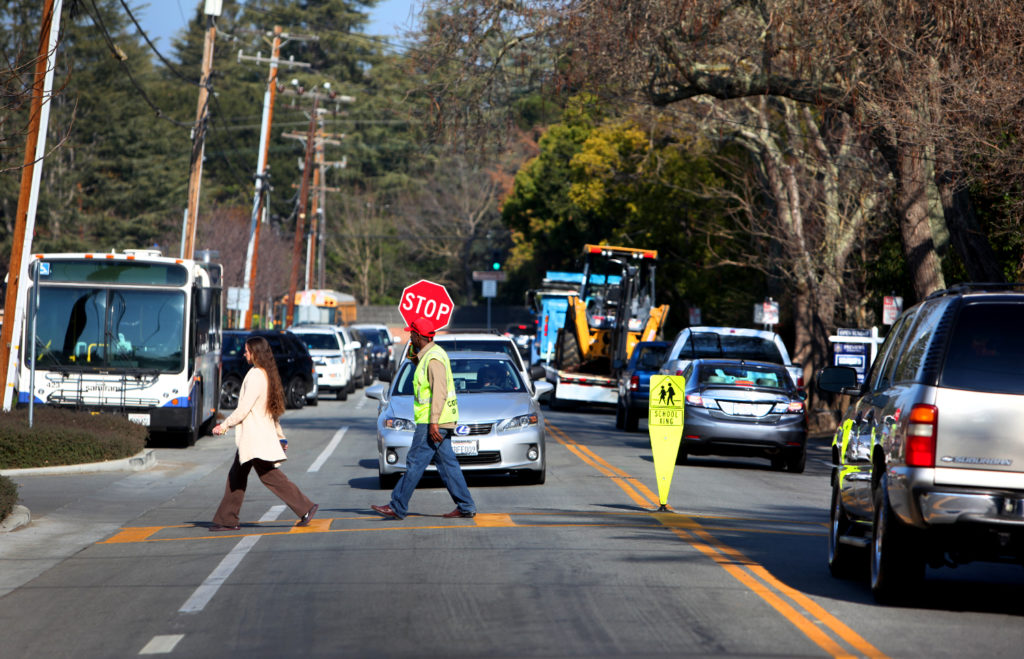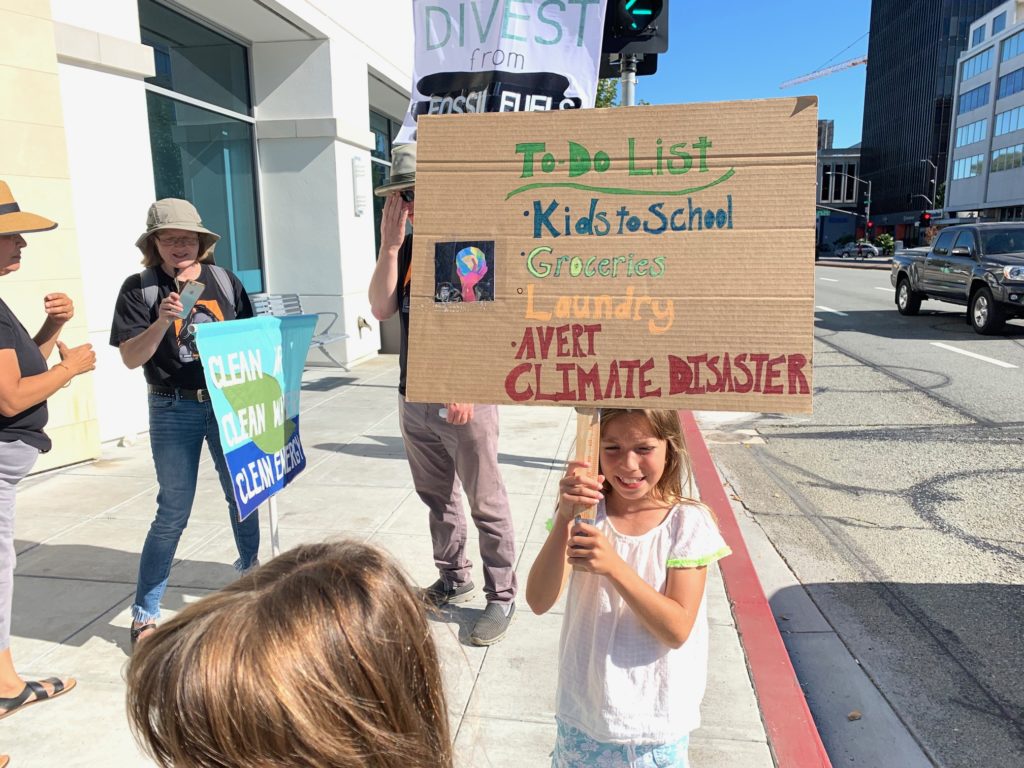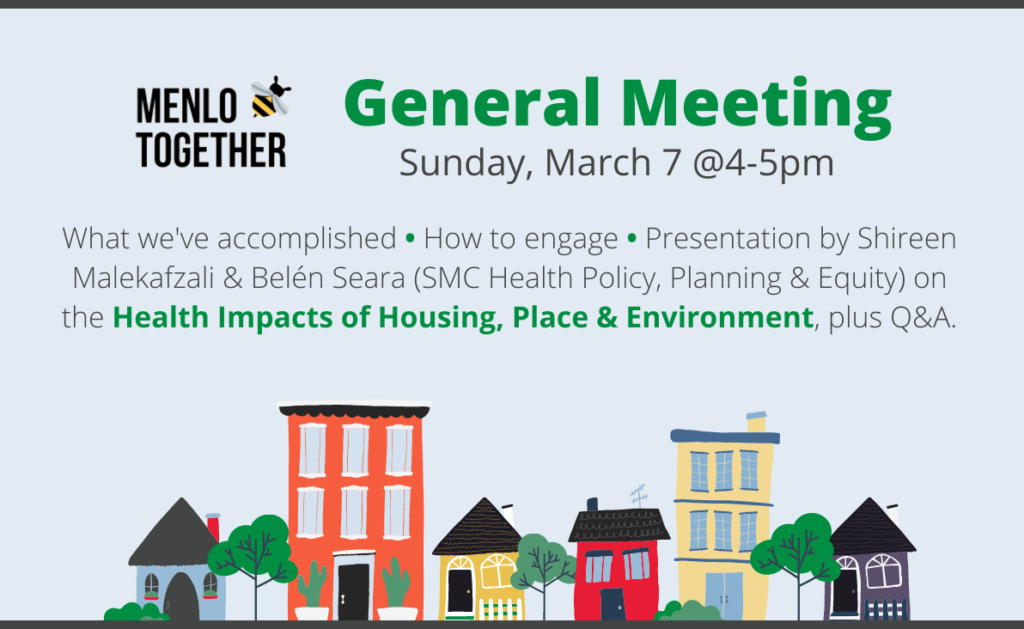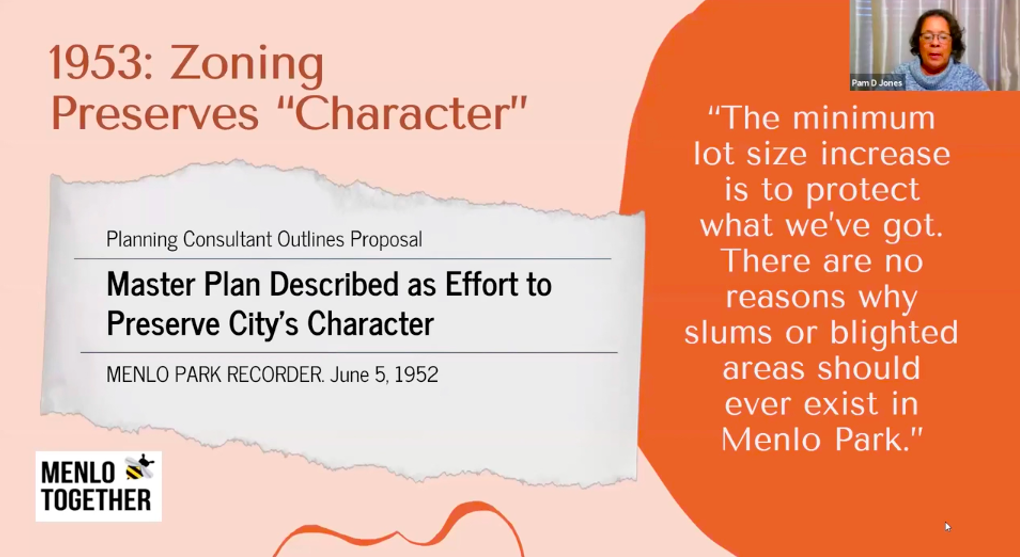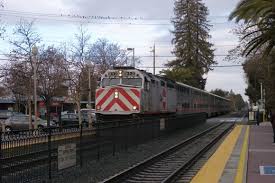Menlo Park City Council is considering its budget for the 2021/2 fiscal year. Thankfully, the budget is based on optimistic projections that take into account the high vaccination rates, declining Covid prevalence, and increasing economic activity.
We are grateful that this year’s budget will enable the city to start to recover from the impacts of the pandemic. We urge that recovery not to simply return us to previous conditions, but to instead, focus on forward-looking priorities of climate, safety, health and equity.
The City Council has opportunities to restore services and recover from the impact of the pandemic with budget decisions that provide
* progress on transportation and climate
* reimagining public safety
* recovery for vulnerable community members
Community members will have a chance to weigh in on the city’s budget at several upcoming meetings including a community meeting on June 1, and Council meetings on June 8 and June 22.
If you have thoughts for City Council (after reading this blog), send a note to city.council@menlopark.org
The community meeting on June 1 from 5-8pm is a good time to ask questions of staff: https://www.menlopark.org/855/City-budget
Zoom Link: https://zoom.us/j/91271920424
If you have to choose one time to make spoken public comment to the City Council, join the June 8 City Council meeting (by Zoom/dial-in). The agenda and dial-in information is expected to be posted on Wednesday, June 3 and we will share it as well.
Read on for some overview information on the budget, and ideas for recommendations to refine the budget to support Menlo Together’s values.
Budget overview
The City’s General Fund, where the City Council has the most spending discretion, represents about $58 million dollars. If we are reading the city’s budget data correctly, the city’s General Fund budget was about $70 million. However, this year the city made some accounting changes moving about $4 million into other funds, leaving $66 million for an apples to apples comparison to the pre-Covid General Fund.
So the city’s revenue is projected to still be more than 10% down, but that may change based on the pace of economic recovery. .
https://stories.opengov.com/menlopark/published/6tQNllAoZ
The bulk of the city’s resources, over 60% are used for personnel pay and benefits. The largest share goes to police, followed by the library and community services, and public works (see chart.).
For more information, check out the city’s budget website and this helpful presentation put together by Council Member Wolosin for her constituents and all city residents.
https://stories.opengov.com/menlopark/published/iwqNQF6Mb
https://docs.google.com/presentation/d/1jAboQ9m4LQQ9s5UeplVC6eUWYEc31DA_FvaRdieBfx8/edit?usp=sharing
Progress on transportation and climate
The Public Works section of the budget notes that Covid recession cuts impacted a wide range of services including park maintenance, the heritage tree program, fleet maintenance, street maintenance, review of new development proposals, customer service, neighborhood traffic management, planned transportation projects, transportation demand management, and the holiday tree.
The staff recommends restoring 5 full time equivalent staff for the heritage tree program and maintenance, restoring staffing for neighborhood traffic management, and adding 1 full time equivalent to advance the Climate Action Plan.
The Climate Action Plan implementation is a top priority for City Council, and the largest source of greenhouse gas emissions is transportation. The city has recently approved a Transportation Master Plan (TMP) that identifies numerous projects and programs that provide safe, convenient, and climate-friendly alternatives to driving.
In the Covid recovery budget, we urge the City to prioritize proactive measures to implement TMP projects and programs and advance the Climate Action Plan.
Reimagining public safety
The City Council has identified reimagining public safety as a top priority for the city.
Meanwhile, the budget recommendation is to rehire 5 full time equivalent staff positions to the police force, before the process to assess and reimagine policing and public safety.
A recent analysis (see below) shows that there are substantial activities currently handled by Menlo Park Police for which other public strategies may be appropriate.
We urge the City Council to hold off on substantial increases to staff levels while the city considers the most effective ways to use the budget to advance public health and safety. We do support full staffing of the data functions that allow these reports and other information that will enable residents and the Council to assess how best to use funds and resources to improve public safety.
Data source: MPPD. Analysis source: SVDSA
Recovery for vulnerable community members
Menlo Park is receiving $6.53 million in federal funding from the American Rescue Plan.
The draft budget recommends using this funding to increase city services before the city has full certainty about the pace of post-pandemic recovery of tax revenue.
By comparison, we have observed that the City of Mountain View plans to use its American Rescue Plan funds for measures addressing the impacts of the pandemic on vulnerable residents and businesses, including rent relief, displacement prevention, homelessnes services and downtown revitalization.
We would encourage the city to take an approach similar to Mountain View with the ARP funds.


